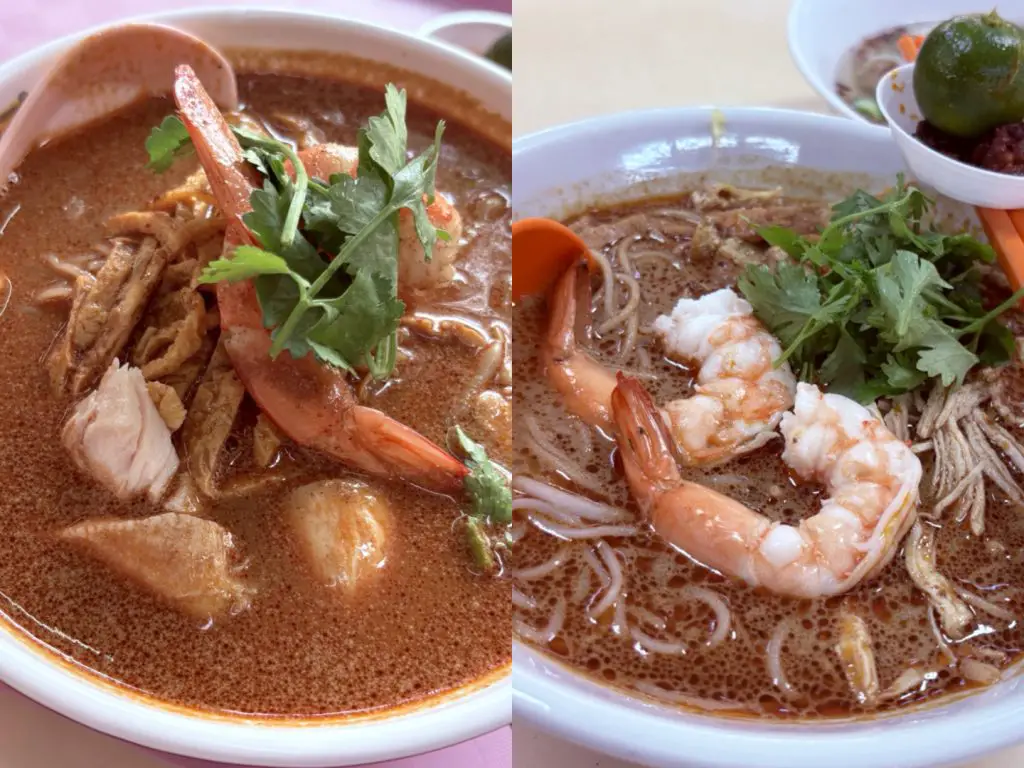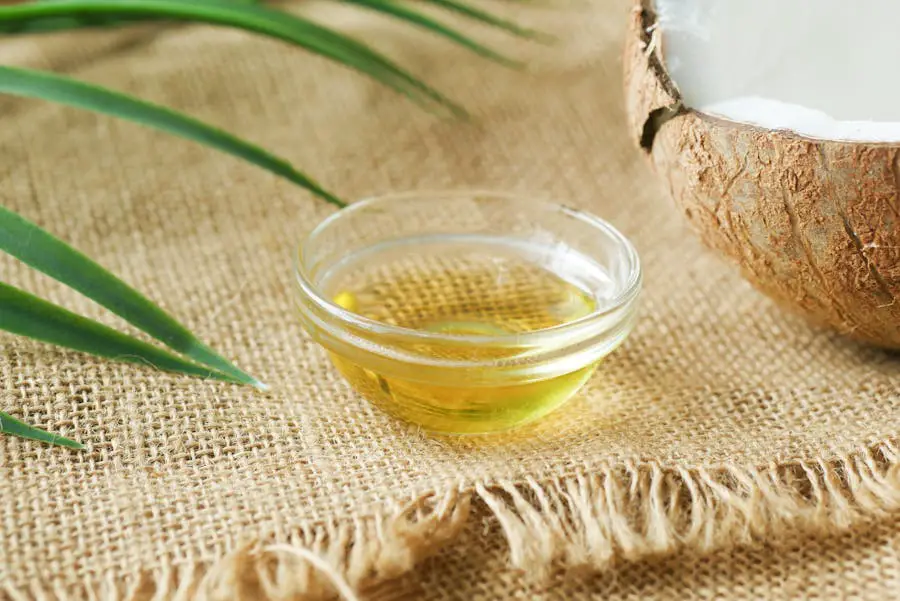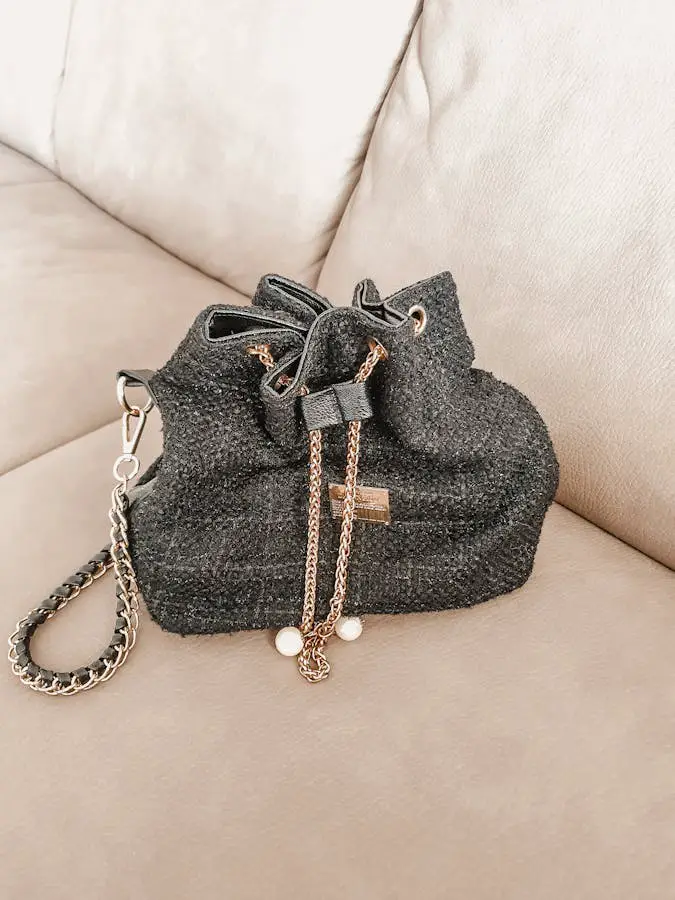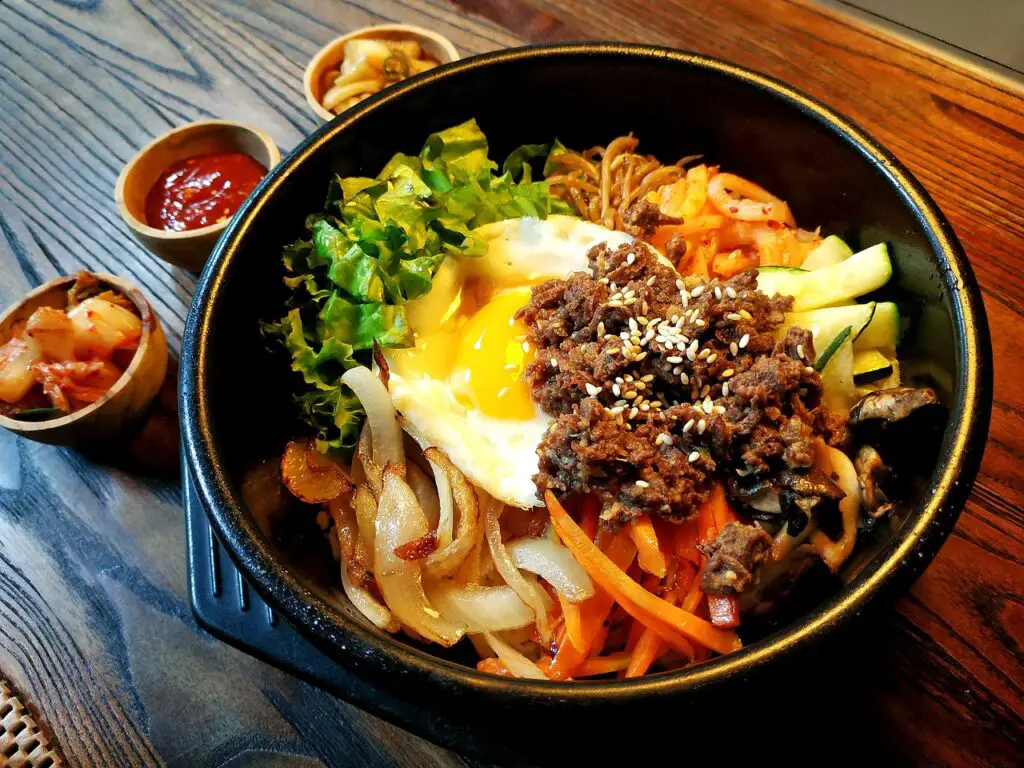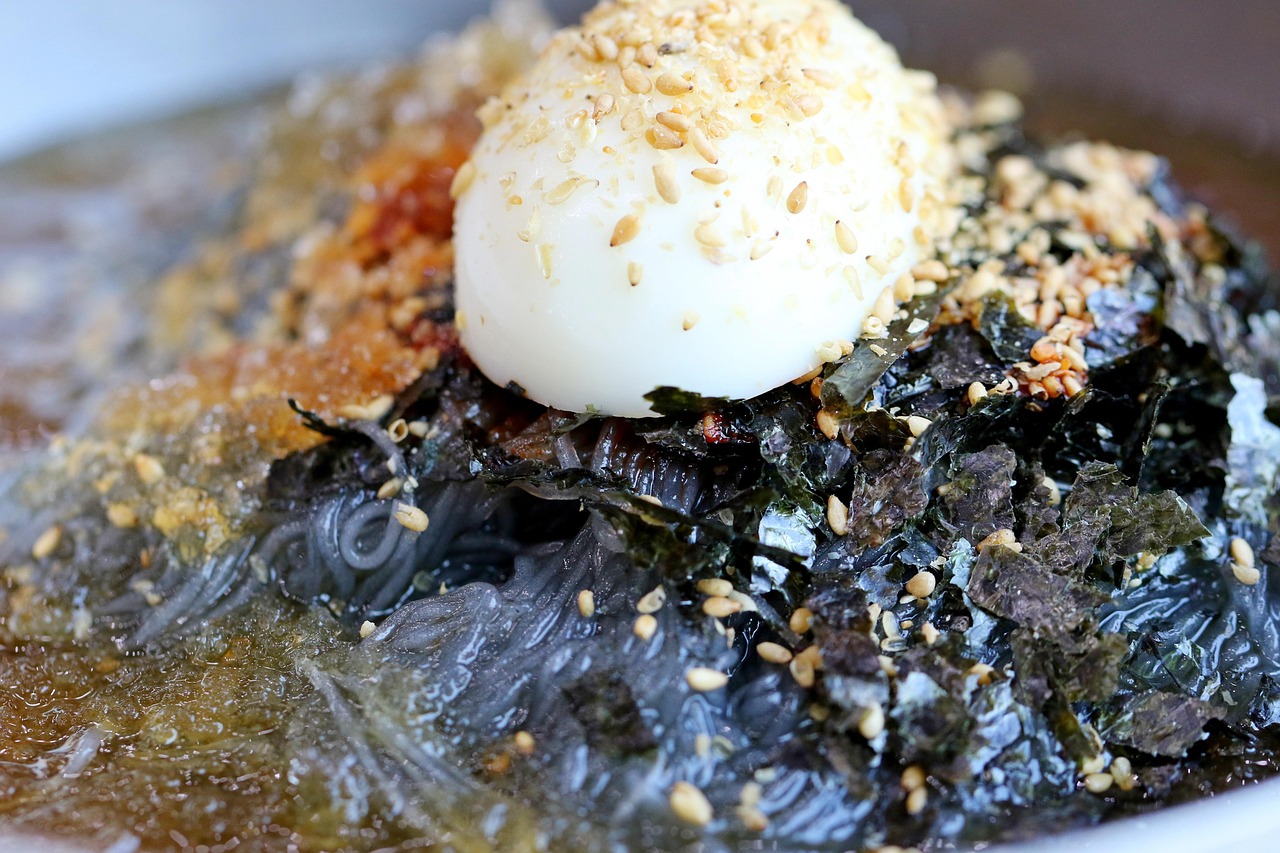By Ng Ai Fern
Sarawak dishes have quietly made their way into Singapore’s multicultural dining landscape. And while Sarawakians and Singaporeans share many things in common, one thing Sarawakians remain fiercely proud of is our Sarawak Laksa.
Ask any Sarawakian and you’ll hear the same answer: Singapore Laksa, Penang Laksa, Adam Road Laksa, curry laksa… none match the identity or depth of Sarawak Laksa.
Sarawak Laksa is Sarawak Laksa.
Unlike Kuching, where you must wake up early before your favourite stall sells out, many Sarawak laksa stalls in Singapore operate throughout the day.
Here are five authentic and affordable spots – not ranked but simply a personal guide – for anyone missing the taste of home or introducing Singaporean friends to Sarawak flavours.
1. Mao You Sarawak KoloMee & Laksa
Voted as one of the most loved Sarawak laksa stalls in an online poll organised by STATOS , Mao You has built a following for its straightforward, Sarawak-focused menu: Laksa, Kolo Mee (Mee Pok, Kueh Tiao, Mee Hoon), and Kampua.
During my visit on a Saturday afternoon, the laksa had just sold out, so I ordered kolo mee, only to be called back moments later: “Still got laksa broth – I can make two bowls for you.” A true ‘kaki nang’ moment indeed when you meet somebody from the same hometown.
I was served a comforting bowl of laksa that tasted unmistakably like home: richly fragrant, topped with fresh deveined prawns and sliced chicken instead of the usual shredded version. Their bowls feature a cute cat cartoon, and even the serving trays have paw prints.
Mao You now operates two outlets, including one in Woodlands.
Location: 422 Ang Mo Kio Ave 3 (near Ang Mo Kio MRT)
Price: $6.50 / $7.50 (Sarawak Laksa with beehoon), $7 / $8 (noodles)
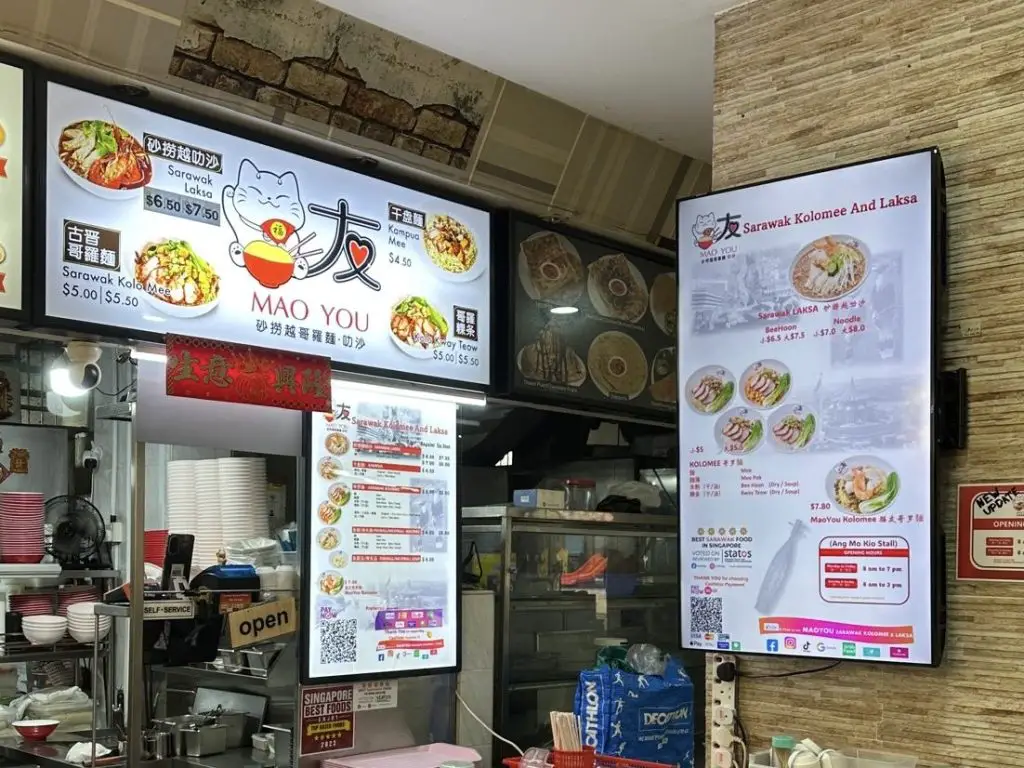

2. Sarawak Delicacy Laksa & Kolo Mee (Bedok)
True to their tagline “taste like home, bringing the true flavours of Sarawak to Singapore”, Sarawak Delicacy founded by a Sarikei-born owner, has grown steadily over nine years and now runs five outlets islandwide.
Their original Bedok stall sits in a neighbourhood long favoured by East Malaysians and is also where I had my first Sarawak Laksa in Singapore more than 20 years ago, back when it was rarely found here.
The owner’s son asked whether I preferred xiang cai (coriander) as garnish. After I finished the laksa, he asked for my feedback and immediately went to taste the broth himself – a sign of how seriously they take authenticity.
Their outlets offer variations, from laksa and kolo mee to tomato fried noodles, kampua, minced meat rice and more.
Location: 204 Bedok North Street 1 (minutes away from Bedok MRT)
Price: $6.60/ $8.30 (Sarawak Laksa with beehoon), $7.10/ $8.80 Sarawak Laksa (noodle)


3. Lin Yu Mei Sarawak Laksa
Their original Haig Road stall was under renovation when I visited, so I headed to their outlet at the world’s coolest street Joo Chiat.
The air-conditioned space offers a wider menu than expected: hotpot, fish soup, and several restaurant-style dishes. A large poster featuring Sarawak Laksa and Kolo Mee dominates the wall.
When taking my order, the staff asked, “Prawn or fishball?” While the broth is authentic Sarawak laksa, I was served with chilli sauce, instead of the typical Belacan.
Location: 151 Joo Chiat Road (about 10–12 minutes’ walk or 3 minutes by car from Eunos MRT)
Price: $8.50 Sarawak Laksa (comes with a hot coffee or tea)

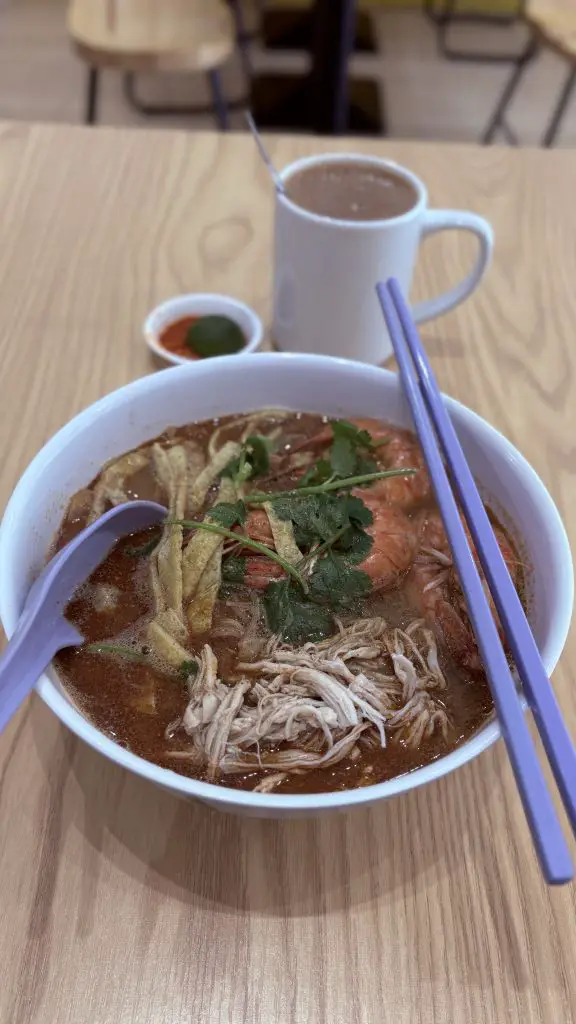
4. Tracy’s Sarawak Kitchen
Located just outside Aljunied MRT, this stall is easy to miss, but its regulars never do. It enjoys a strong following and was voted one of the most loved Sarawak food stalls in a STATOS online poll, with media coverage displayed proudly.
Expect a queue during lunch hours. Most of the staff are Sarawakians, and one shared that the majority of customers are Malaysians from across East and West Malaysia, all seeking familiar flavours.
The menu includes Wok-Wei Stir-Fried Kolo Mee, Manicai Longevity Noodles, and Tomato Crispy Noodles, alongside their laksa. The laksa I had on a hot afternoon, paired with delicious sambal belacan, truly hit the spot.
They also operate outlets at myVillage Mall and Choa Chu Kang.
Location: Geylang Lor 25A (outside Aljunied MRT)
Price: $6.90 for Sarawak Laksa
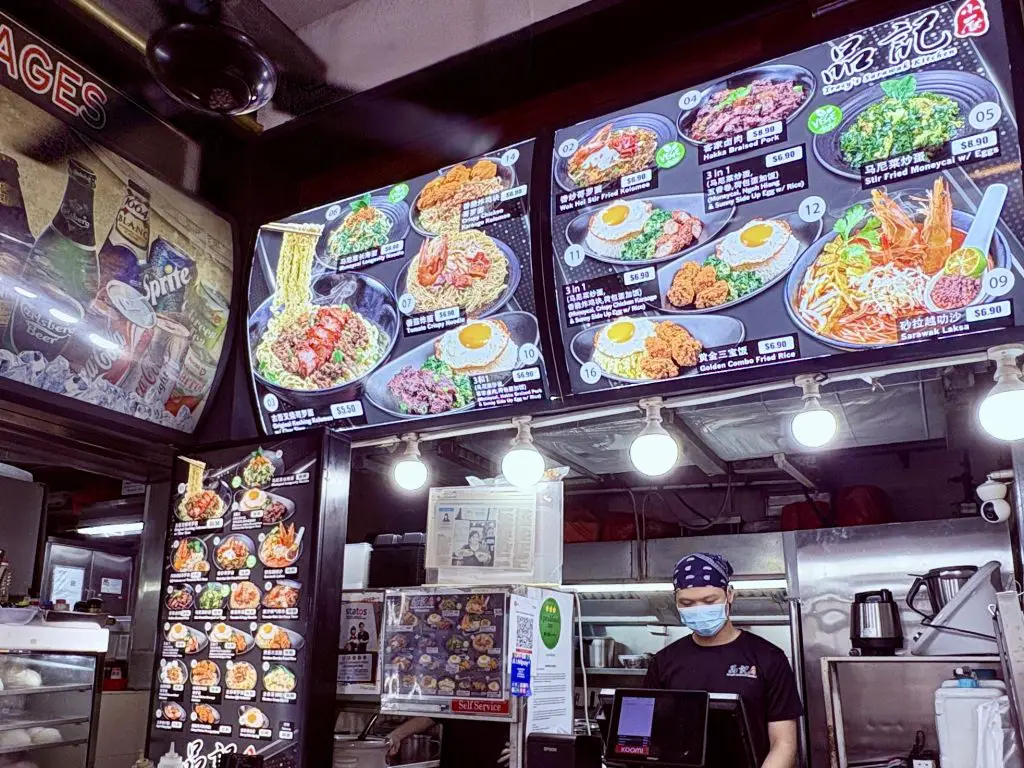

5. Sarawak Kolo Mee & Laksa
This stall has been in operation for over eight years and became especially popular during the COVID period, when many Sarawakians could not travel home. Weekends here often feel like a small Kuching gathering with familiar faces, familiar accents, and familiar food.
Their menu focuses on three staples: Sarawak Laksa, Kolo Mee, and Kuching-style wanton soup, with kolo mee offered in white (plain), red (char siew oil), or black (dark soy sauce). The camera-shy lady boss and her sister run the stall with a focus on quality over expansion.
Recently, they added a second stall right next door, run by Jong, the boss’s 18-year-old godson from Tapah, Kuching. The new menu includes Heng Hua noodles, tomato noodles, and fried longevity noodles with manis vegetables. When I visited, it was their first day, and the longevity noodles were already a hit.
Come early on weekends, and remember to check their Facebook page beforehand. The owners close occasionally for well-deserved time off.
Location: Blk 25 New Upper Changi Road # (minutes walk from Bedok MRT)
Price: $5/6/7 Sarawak Laksa

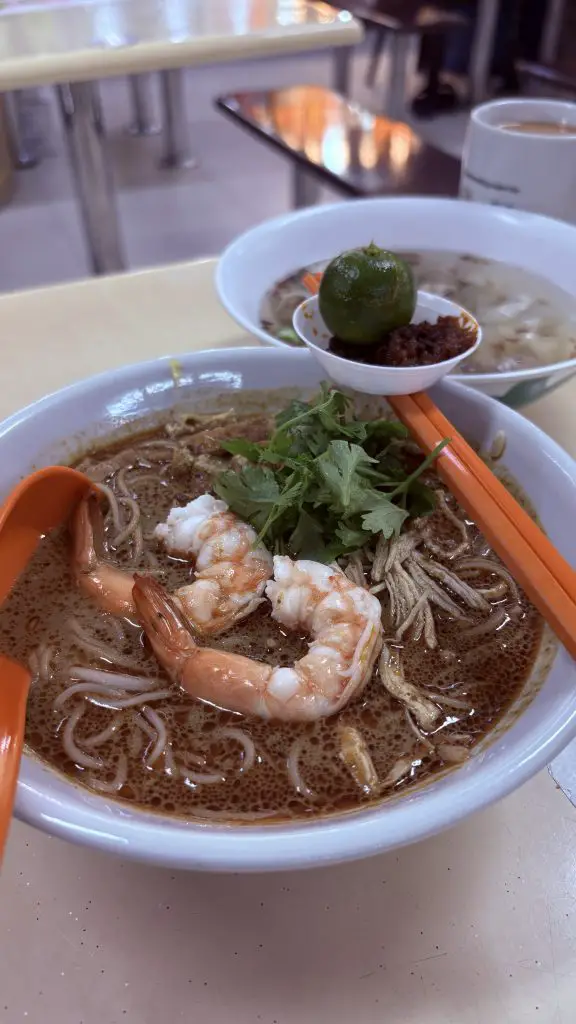
Sarawak laksa stalls continue to pop up across the island. After enjoying a hearty bowl in Bedok recently, I even came across a new stall called “Fat Cat” that had opened just three weeks earlier. With strong air links between Singapore and Kuching, Miri and Sibu, and AirBorneo launching soon, home feels physically close for many Sarawakians here.
For Sarawakians, a bowl of Sarawak Laksa has always represented something deeper – a taste of identity, comfort, and memory. It’s a reminder that sometimes, home is just one good bowl away.
